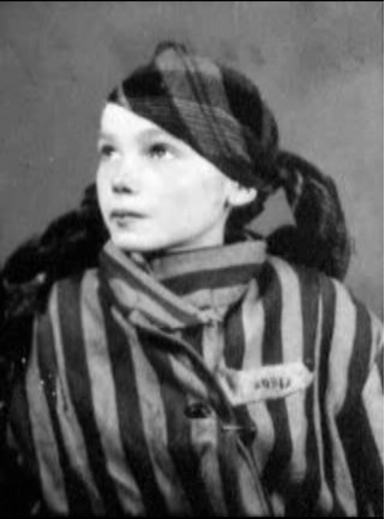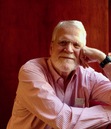Mark Scott Smith's Blog: Enemy in the Mirror, page 116
March 19, 2014
Japanese Submarine Attacks Santa Barbara – 23 Feb 1942

Wikimedia Commons
Before the war, Commander Kozo Nishino of the imperial Japanese Navy submarine I-17 commanded a merchant ship which had transported oil from the Ellwood Oil Field in Santa Barbara, California to Japan. On February 23, 1942, the I-17 carried out the first attack against the U.S. mainland by directing cannon fire at a large aviation fuel tank just beyond the beach at Santa Barbara. Shells struck a pier, derrick and a pump house. Several shells also landed on a nearby ranch, but no one was injured.
After several witnesses reported “suspicious light signals“ being sent to shore from the departing submarine, a blackout was called by civil defense authorities. A day later the infamous charade known as the “Battle of Los Angeles” took place.
A
The post Japanese Submarine Attacks Santa Barbara – 23 Feb 1942 appeared first on Enemy in the Mirror.
March 17, 2014
Nazi Concentration Camps, 1939–1942

Auschwitz 1942; Wikimedia Commons
Beginning in 1939, small groups, targeted for political or racial reasons as dangerous to Nazi Germany, were murdered in German concentration camps.
During 1939–1942, as Germany occupied most of Europe, the SS established new concentration camps for increasing numbers of political prisoners, resistance groups, and groups deemed racially inferior, such as Jews and Gypsies.
In January 1942, the Wannsee Conference, held by the SS-Reich Main Security Office in a Berlin suburb, completed plans for implementation of the “final solution” in which most of the Jews of German-occupied Europe would be deported to Poland and exterminated.
The post Nazi Concentration Camps, 1939–1942 appeared first on Enemy in the Mirror.
March 14, 2014
Blackouts and Dimouts – USA 1942

Photo no. 1895, Highway Dept. Records, OSA
Along the west coast USA during the months following the attack on Pearl Harbor, the fear of a Japanese air attack on coastal cities was palpable. Civil defense efforts mandated completely extinguishing lights with blackouts or minimizing outdoor lighting (including upwardly directed/reflected light) with dimouts. Dark curtains were drawn across windows and the upper half of automobile headlights were painted black to prevent upwardly-directed light.
Civilian adherence to blackout orders on both coasts was mixed, with frequent complaints that blackouts effected businesses and tourism. This was particularly problematic along the east coast in the first half of 1942 where coastal lights actually enabled U-boats to readily identify silhouetted targets. Following disastrous shipping losses, government regulation of night time lighting along the Atlantic Ocean was finally tightened.
The post Blackouts and Dimouts – USA 1942 appeared first on Enemy in the Mirror.
March 12, 2014
Militarization of School Sports in Imperial Japan
In 1925 the Imperial Japanese Ministry of Education and the Department of War began to attach military officers to public schools to establish a military training system.
In 1931 instruction in budo, the traditional martial arts of Japan, became compulsory for all students in middle and normal schools. Students were required to train themselves in either judo or kendo.
Budo, the martial way, was intended to promote bushido (samurai spirit), patriotism and understanding of “the origin of the nation and the dignity of the national constitution.”
The post Militarization of School Sports in Imperial Japan appeared first on Enemy in the Mirror.
March 10, 2014
Japanese-American Teachers Forced to Resign – Seattle February 1942

Pledge of allegiance 1942; Wikimedia Commons
In February 1942, pressured by the press and a petition circulated by a group of white mothers, the Seattle School Board forced the resignation of 27 employees who were American citizens of Japanese ancestry.
The dismissed teachers, at the insistence of James Sakamoto, the editor of the Japanese American Courier signed a letter containing the following:
“We do not take this action in any spirit of defeat, but believe we can by our resignations demonstrate beyond dispute that we have the best interest of the school system at heart. We take this step to prove our loyalty to the school system and the United States by not becoming a contributing factor to dissension and disunity when national unity in spirit and deed is vitally necessary to the defense of and complete victory for America…”
The post Japanese-American Teachers Forced to Resign – Seattle February 1942 appeared first on Enemy in the Mirror.
March 7, 2014
RAF Bombs Lübeck – March 1942

Bombing of Lübeck , Easter 1942; Wikimedia Commons
In 1942, under the leadership of Sir Arthur “Bomber” Harris, the British Royal Air Force decided to intensify bombing of German cities in an attempt to undermine civilian morale. The medieval Hanseatic League city of Lübeck was chosen first because of its ready accessibility on the North Sea and its many timbered buildings that would allow the RAF to test new incendiary bombs (similar to those used by the Luftwaffe against cities such as Coventry during the 1940 Blitz of England).
Although of some importance as a harbor on the North Sea, Lübeck was mainly a cultural center and was only lightly defended. The March 28, 1942 raid on the night before Easter Sunday created a firestorm that destroyed many buildings in the historic center of the city. 301 people were reported dead, three missing and 783 injured. More than 15,000 people lost their homes.
Soon, the Germans would respond with retaliatory raids on English cities chosen from the pages of the 1937 German book Baedecker’s Great Britain.
The post RAF Bombs Lübeck – March 1942 appeared first on Enemy in the Mirror.
March 5, 2014
There Was a Father – Yasujiro Ozu 1942
This lovely, gentle film by Yasujiro Ozu was released in the spring of 1942. A widowed teacher tries to do the right thing for his son. After a student drowns on an school outing, he quits teaching, enrolls his son in a boarding school and takes a factory job in Tokyo. Years later, the son, now a school teacher in a rural community, visits his father and muses that he might quit his job and come to Tokyo. The father rebukes him for thinking of shirking his duty. In the end, the son remains loyal.
Although the war is hardly mentioned, the exemplary self-sacrifice of the characters was well received by government censors and the film was approved.
The post There Was a Father – Yasujiro Ozu 1942 appeared first on Enemy in the Mirror.
March 3, 2014
U.S. War Time = Daylight Saving Time – February 1942

British Daylight Saving Time 1914; Wikimedia Commons
Daylight Saving Time (advancing the clock one hour in springtime) was instituted in the U.S. and in many European countries during WWI, but was unpopular in the USA and repealed in 1918. In February 1942, in an effort to better utilize daylight hours and conserve energy, the law was re-instituted in the USA.
The post U.S. War Time = Daylight Saving Time – February 1942 appeared first on Enemy in the Mirror.
February 28, 2014
Triumph of the Will – Hitler 1935
Leni Riefenstahl’s 1935 Triumph of the Will, documenting Adolf Hitler’s Nazi party convocation in Nuremberg has all the pomp and ceremony of ancient Rome. Hitler’s speeches, with emotional emphasis on the trials and tribulations of a heroic German Volk after WWI, electrified the crowd and created an atmosphere of militant ascendancy.
The post Triumph of the Will – Hitler 1935 appeared first on Enemy in the Mirror.
February 26, 2014
FDR Fireside Chat – Washington’s Birthday 1942

FDR 1942; Wikimedia Commons
“This war is a new kind of war. It is different from all other wars of the past, not only in its methods and weapons but also in its geography. It is warfare in terms of every continent, every island, every sea, every air lane in the world.
That is the reason why I have asked you to take out and spread before you a map of the whole earth, and to follow with me the references which I shall make to the world-encircling battle lines of this war.”
via Franklin D. Roosevelt: Fireside Chat.
The post FDR Fireside Chat – Washington’s Birthday 1942 appeared first on Enemy in the Mirror.
Enemy in the Mirror
I began by posting events around the turn This website www.enemyinmirror.com explores the consciousness, diplomacy, emotion, prejudice and psychology of 20th Century America and her enemies in wartime.
I began by posting events around the turn of the 20th century as I was researching my first novel about the Pacific War. I continued through WWII for my second novel about the Battle of the Atlantic. Now I am beginning to look at the Cold War as I gather information for my next novel about the Korean War. ...more
- Mark Scott Smith's profile
- 7 followers




